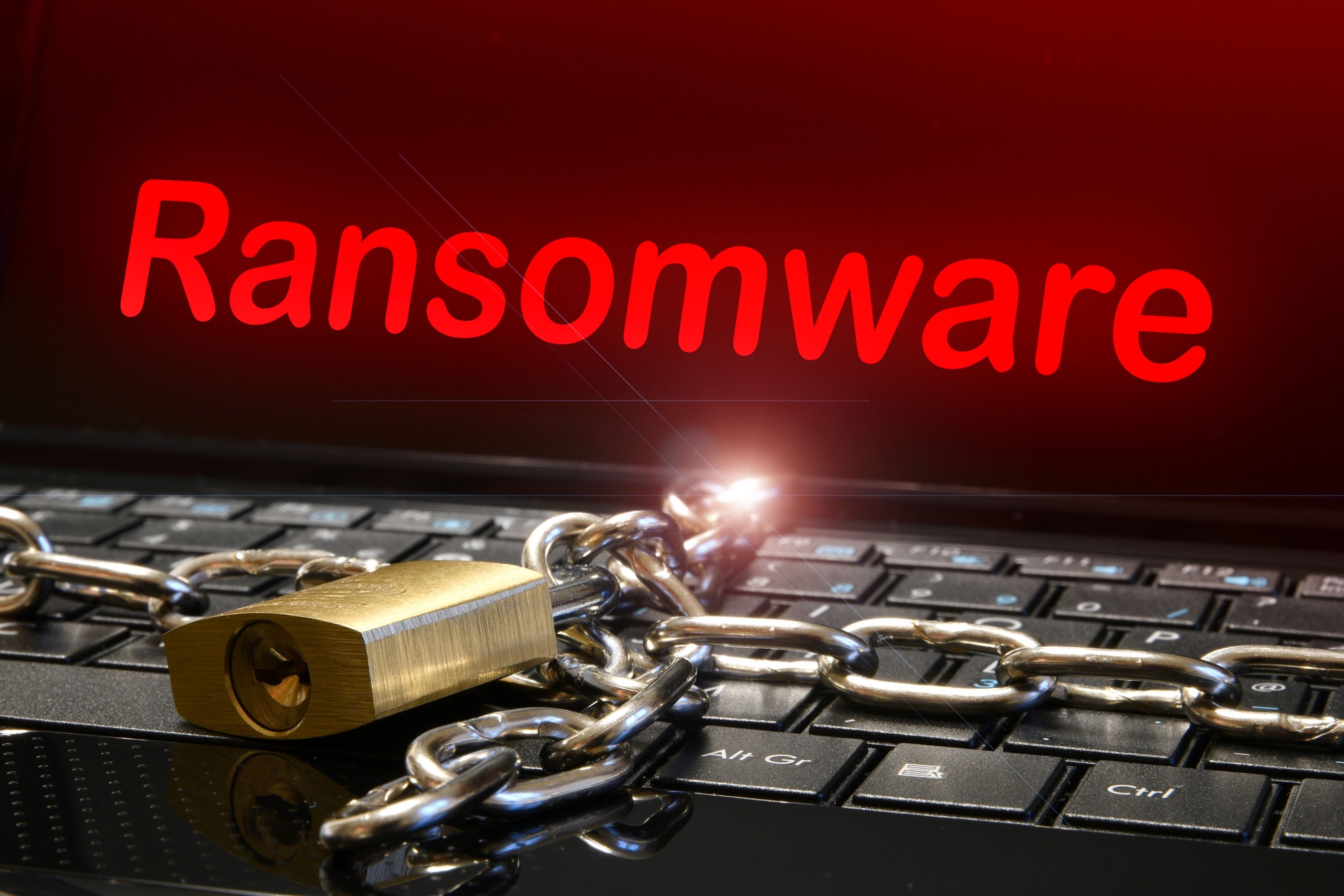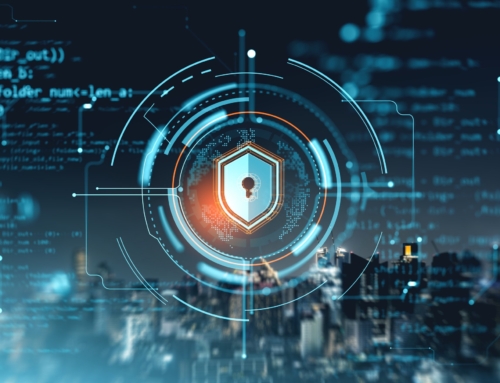How to Develop a Business Continuity Plan for Ransomware Scenarios
Understanding the Threat of Ransomware in Today’s Digital Landscape
As cybersecurity threats evolve, ransomware remains a critical concern for businesses of all sizes. A business continuity plan for ransomware is our safeguard against the debilitating effects such attacks can inflict. Ransomware is a type of malware that encrypts data, leaving a business helpless unless a ransom is paid. This impact is not merely a temporary inconvenience; it can lead to substantial financial losses, damage to reputation, and in some cases, the permanent closure of affected enterprises. In today’s digital ecosystem, our proactive measures are paramount to safeguard business integrity and continuity. Considering that a company falls victim to ransomware every 11 seconds, as recent reports suggest, the urgency to act cannot be overstated.
The Role of a Business Continuity Plan for Ransomware Scenarios
A business continuity plan (BCP) is an organization’s response blueprint to keep operations running in the face of disruptions, including ransomware incidents. For us at Alvaka, emphasizing the importance of a tailored BCP for ransomware is about ensuring operational resiliency. It is our structured approach to identifying threats and vulnerabilities, safeguarding critical systems, and ensuring our clients can quickly resume mission-critical functions. Without a BCP, businesses stand to face prolonged downtimes, immense recovery costs, and the potential loss of customers and partners dissatisfied with the disruption to services.
Essential Components of an Effective Business Continuity Plan for Ransomware
The hallmark of an effective business continuity plan for ransomware lies in its comprehensive approach to preparedness and response. At Alvaka, we focus on essential components which include an incident response plan, disaster recovery strategies, employee training, and regular backup procedures. This strategic alignment equips businesses to anticipate ransomware threats, react promptly, and maintain uninterrupted service. We integrate communication plans to ensure all stakeholders are informed during an incident, alongside regular audits and updates that keep the BCP effective against emerging ransomware tactics. Combined, these components are fundamental in establishing the resilience necessary for businesses to thrive despite the challenges ransomware presents.
Assessing Your Risk and Vulnerability to Ransomware Attacks
In the current digital age, where ransomware poses a substantial threat to organizations of all sizes, it’s critical to have a robust business continuity plan for ransomware in place. At Alvaka, we emphasize the initial step towards resilience is to conduct a comprehensive risk assessment. This process helps you understand the likelihood and potential impact of ransomware attacks on your business operations.
Conducting a Thorough Risk Assessment
Conducting a risk assessment involves identifying your assets, threats, and vulnerabilities. We encourage you to catalog all digital assets, including software, hardware, and data, to understand the scope of your potential exposure. Recognizing the business processes that depend on these assets is equally important. Our team focuses on discerning which assets are critical for maintaining operational continuity and which may possess established vulnerabilities.
Yet, a sound assessment does not stop at the internal environment. At Alvaka, we help you evaluate external threats, staying ahead of evolving ransomware tactics that could potentially breach your defenses. By simulating ransomware scenarios, we enable you to test your systems’ resilience, thereby uncovering any weaknesses in your infrastructure.
Identifying Systems and Data Critical to Your Operations
One of the fundamental steps in crafting a business continuity plan for ransomware is the precise identification of systems and data that are pivotal to your operational integrity. Here at Alvaka, we guide you through a classification process marking the priority level for each asset. This classification is critical in determining which systems require immediate attention and which can be restored over time.
Our methodology ensures that you are not left unprepared, mapping out the interdependencies between different systems and understanding how a disruption in one area can cascade through your operations.
- Create an inventory of critical data and applications.
- Identify interdependencies between systems and sectors of your business.
- Assess the impact of downtime on each critical component.
- Understand the legal and compliance requirements for data storage and access.
After these steps, we advance to developing strategies and protocols that minimize data loss and facilitate swift recovery. By having these recovery targets well-defined, your business continuity plan for ransomware will not only be more robust but also actionable during an attack. Moreover, we stay committed to iterating on your plan, so it adjusts and improves as new threats emerge and your business grows.
The continuity blueprint that we create spans across backups, disaster recovery sites, and secure cloud storage solutions. Our comprehensive audits ensure that your backups are ransomware-proof and retrievable with minimal downtime. We reinforce your systems with multiple layers of security, reducing the potential impact of ransomware and enabling you to maintain business operations even when faced with digital extortion threats.
Ultimately, the effectiveness of a business continuity plan for ransomware hinges on its ongoing testing, updates, and training. We engender a culture of cyber resilience within your teams, ensuring that employees are vigilant and aware of the necessary steps to prevent and respond to ransomware incidents. Through drills and recovery exercises, we validate the effectiveness of your response plan, ensuring that when a real threat surfaces, your business is prepared and your critical functions remain intact.
Did you know that a ransomware attack occurs every 11 seconds, making it critical for businesses to have a robust continuity plan to manage the risk?
Forging Ahead: How a Comprehensive Business Continuity Plan for Ransomware Ensures Future Stability
As we navigate the complexities of today’s digital landscape, the importance of a robust business continuity plan for ransomware cannot be overstated. At Alvaka, we are committed to empowering businesses with the resilience needed to face this pervasive cyber threat. The journey toward a ransomware-resilient future may seem daunting, but with a meticulously crafted plan, the ability to withstand and recover from such attacks is within reach.
Sealing the Future with Ransomware Preparedness and Recovery Strategies
The final cornerstone of our continuity strategy is the implementation of robust ransomware preparedness and recovery measures. In the face of an incident, time is of the essence. Our expertise in ransomware recovery becomes a beacon of hope, swiftly guiding businesses back to operational normalcy. With each plan tailored to fit the unique needs of our clients, we ensure that their path to recovery is clear, rapid, and devoid of uncertainty.
Incorporating ransomware recovery protocols, we reinforce the security posture of businesses, enabling them to not only spring back into action post-attack but also to mitigate the risks of future disruptions. The fruits of our labor are reflected in the robustness of our clients’ networks, the continuity of their operations, and the trust they engender in their stakeholders.
Uniting in the Face of Adversity: The Power of Community and Collaboration
But our responsibility extends beyond individualized plans. It involves cultivating a culture of security-mindedness among our clients and fostering a community where collective knowledge against ransomware threats is shared freely. Collaboration is key, and we at Alvaka stand ready to lead this charge, providing not just services, but also thought leadership and advocacy for stronger regulatory frameworks that protect businesses and their valued data.
Navigating the Path Forward with Alvaka’s Expert Guidance
The conclusion of constructing a business continuity plan for ransomware is not an endpoint—it’s a continuous cycle of adaptation and improvement. At Alvaka, we remain vigilant and proactive, ready to refine our strategies in response to the ever-evolving landscape of cyber threats. Our role is to be the relentless guardian of our clients’ digital worlds, navigating them through uncertainty and directing them toward a secure and prosperous future.
Building a Legacy of Cyber Resilience and Confidence
Together, we not only overcome the challenges of today but also build a legacy of resilience that defines the business leaders of tomorrow. A strong business continuity plan for ransomware is more than a safety net—it’s a statement of confidence, a testament to a business’s dedication to protecting its operations, its customers, and the integrity of its data against the scourge of ransomware.
Let’s embark on this journey with unwavering commitment, and with Alvaka’s expertise, transform the threat of ransomware into a narrative of triumph and security. As partners in this endeavor, we promise to guide, to innovate, and to secure—a promise that equates to the sustained success and growth of our clients. This is our mission; this is our pledge to you.
FAQ
What is ransomware and how can it affect our business? ▼
Ransomware is a type of malicious software (malware) designed to block access to a computer system or encrypt data until a sum of money is paid. It can have a devastating impact on businesses by halting operations, compromising sensitive data, and incurring significant financial and reputational damage. Therefore, it’s crucial for businesses to implement robust security measures and maintain vigilance against such threats.
Why is a business continuity plan (BCP) vital in dealing with ransomware? ▼
A Business Continuity Plan (BCP) is a strategic framework that prepares businesses to continue operations in the event of a ransomware attack. It ensures that critical functions can still run and that data can be restored with minimal downtime. Without a BCP, businesses are significantly more vulnerable to the disruptive effects of ransomware, potentially leading to prolonged outages and loss of trust among stakeholders.
What are the key components of a ransomware-specific business continuity plan? ▼
An effective BCP for ransomware should include a comprehensive risk assessment, identification of critical systems, data backup and recovery procedures, communication strategies, and regular training and testing. Together, these components establish a proactive defense against ransomware and facilitate a rapid and coordinated response in the wake of an attack.
How do we conduct a thorough risk assessment for ransomware? ▼
To conduct a thorough risk assessment, we must first identify and evaluate all potential vulnerabilities within our systems and networks. This involves scanning for security gaps, understanding the potential impact of ransomware on different segments of our business, and prioritizing the protection of assets accordingly. Subsequently, we should develop strategies to mitigate identified risks.
Can regular data backups protect us from ransomware attacks? ▼
Regular data backups are a critical safeguard against ransomware. By maintaining updated copies of our essential data, we can restore our systems without succumbing to ransom demands. It’s important, nonetheless, to ensure that backups are secure and not connected to the networks or systems that could be compromised during an attack.
What training should employees undergo to prevent ransomware incidents? ▼
Employees should participate in cybersecurity awareness training that highlights the dangers of ransomware, teaches the best practices for spotting and avoiding phishing attempts, reinforces secure password protocols, and educates on the importance of reporting suspicious activities promptly. Such training strengthens our human defense line against cyber threats.
How often should we update and test our business continuity plan? ▼
Our business continuity plan should be updated and tested regularly—at least annually or whenever significant changes occur within our organization or the threat landscape. Regular updates and testing ensure that the BCP remains relevant and effective in preparing and protecting our business against ransomware and other emergencies.
In what way does a communication plan form part of the business continuity plan? ▼
A communication plan is a crucial part of the BCP as it outlines the procedures to notify employees, stakeholders, customers, and possibly the public about a ransomware incident. It ensures that all parties are informed about the situation, the steps being taken to resolve it, and any necessary actions they must take, thereby managing the incident more effectively and maintaining trust.
Should our business continuity plan be customized to our specific business? ▼
Yes, each business continuity plan should be tailor-made to fit the unique needs and structure of the business. This custom approach ensures that the plan addresses the specific operational, technological, and personnel aspects of our business, offering the most effective response to a ransomware attack and minimizing potential disruption.
What role do incident response teams play in a ransomware scenario? ▼
Incident response teams are specialized groups within our organization that are trained to deal with cybersecurity incidents like ransomware attacks. Their role is to execute the response plan efficiently, mitigate the attack’s impact, lead recovery efforts, and communicate with affected parties. They are a core component of our business’s resilience strategy.








 Smoke testing is a term used to describe the testing process for servers after patches are applied.
Smoke testing is a term used to describe the testing process for servers after patches are applied.  This is a basic cost calculator for you to compute your typical monthly cost for patching your servers, PCs, laptops, tablets and associated application software. It also forms the basis for you to begin calculating your Return on Investment for software patching, or for comparison with alternatives to the manual process of patching operating systems and application software—such as Patch Management as a Service, also known as Vulnerability Management as a Service.
This is a basic cost calculator for you to compute your typical monthly cost for patching your servers, PCs, laptops, tablets and associated application software. It also forms the basis for you to begin calculating your Return on Investment for software patching, or for comparison with alternatives to the manual process of patching operating systems and application software—such as Patch Management as a Service, also known as Vulnerability Management as a Service.